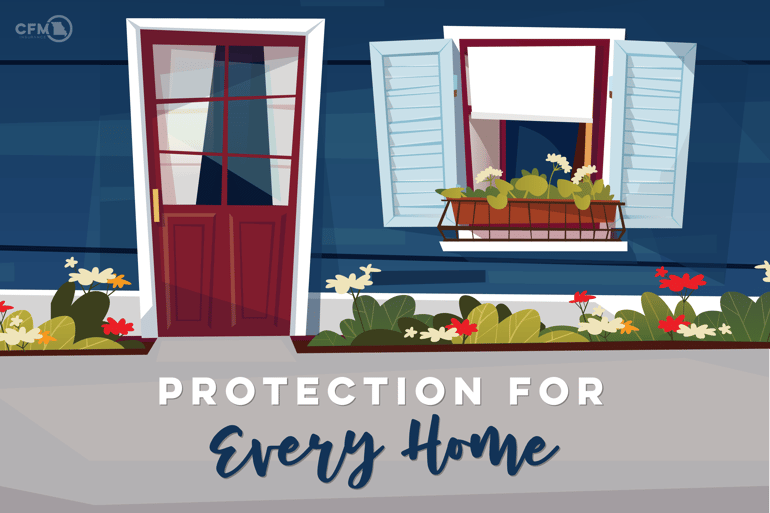 If there's one thing we understand pretty well after being in the insurance industry for over 150 years, it's that no two homes are alike. Because every home is different, an impressive blend of traits, features, and most importantly, memories (much like us humans), we think each should have equally unique insurance protection to match. That's why we're proud to have built several customizable homeowners policies we feel accommodate a broad range of home styles.
If there's one thing we understand pretty well after being in the insurance industry for over 150 years, it's that no two homes are alike. Because every home is different, an impressive blend of traits, features, and most importantly, memories (much like us humans), we think each should have equally unique insurance protection to match. That's why we're proud to have built several customizable homeowners policies we feel accommodate a broad range of home styles.
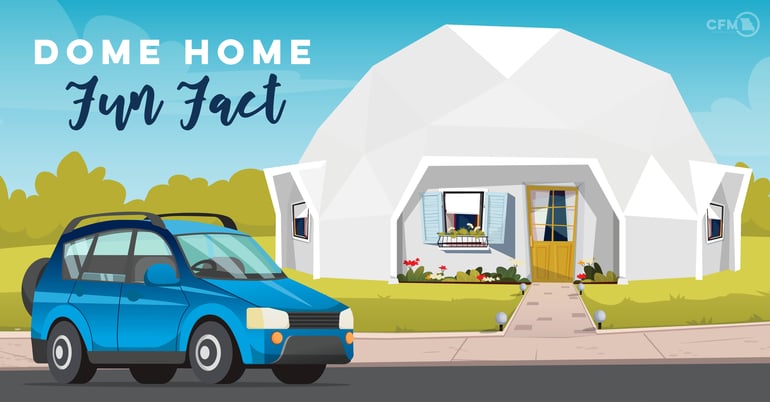 One of the most interesting home designs we currently insure is an octagonal home, or as it's referred to in trendier terms, dome home. The dome's shape and inherent structural integrity make it both stronger and more energy-efficient than a typical family home. It's even described by many architects as practically indestructible. Talk about one-of-a-kind and safe!
One of the most interesting home designs we currently insure is an octagonal home, or as it's referred to in trendier terms, dome home. The dome's shape and inherent structural integrity make it both stronger and more energy-efficient than a typical family home. It's even described by many architects as practically indestructible. Talk about one-of-a-kind and safe!
Whether your humble abode breaks the geometric mold or not, it's important that it's properly insured and even more important that you know exactly what's covered, and what's not, without having to interpret all that tricky insurance lingo along the way. Luckily, we can help you determine all of those things, along with breaking down each CFM homeowners policy type to see what may be a good fit for your property. But first, let's get right to the basics of what's typically covered under a standard homeowners policy, along with what's not.
Standard Homeowners Insurance Policies Do Cover
Your Home - In the insurance world, we refer to your home as the primary dwelling. Your dwelling coverage is the portion of your homeowners insurance policy that applies to the cost of rebuilding and/or repairing your place in the event that it is damaged or destroyed by a covered peril. Covered perils include weather events (wind, hail, or lightning) and fire.
Your Stuff - Known to your policy as personal property or contents, your possessions, A.K.A. furniture, electronics, or clothing, would be protected by your homeowners insurance if they were damaged or destroyed by a covered peril.
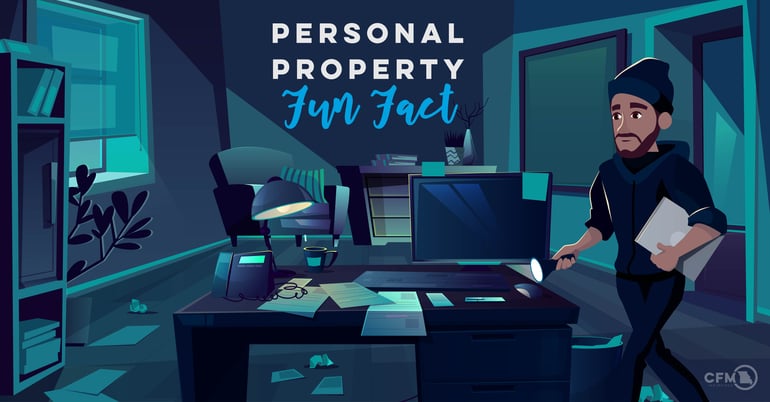
Did you know? Your home insurance covers your stuff, whether it's at home or somewhere else. Say you teamed up with a friend on a work project last Friday and left your laptop on their desk - oops. Over the weekend, their office building gets broken into, and your beloved Macbook Air got swiped. Luckily, it's covered up to the amount your policy limits under your Personal Property Coverage.
If your personal property is worth more than the standard limit on your homeowners policy, you can have additional coverage added for those specific items (fine jewelry, coin collections, art, etc.). We'll discuss this coverage further, a little later on.
Other Structures - If your property has other buildings on it, aside from your home, your policy will refer to them as related private structures. Your homeowners insurance will cover the cost of rebuilding or repairing those structures if they're damaged or destroyed by a covered peril. This includes detached garages, sheds, and other additional buildings (excluding any that are used for farming or other business operations) on your property - even your fence.
Personal Liability - Accidents happen. The personal liability section of your policy protects you or covered family members (named insureds) living at your property, against lawsuits for injuries or property damage, up to a certain amount. For added protection beyond your policy limits, adding a Personal Umbrella to your CFM Homeowners insurance could be beneficial.
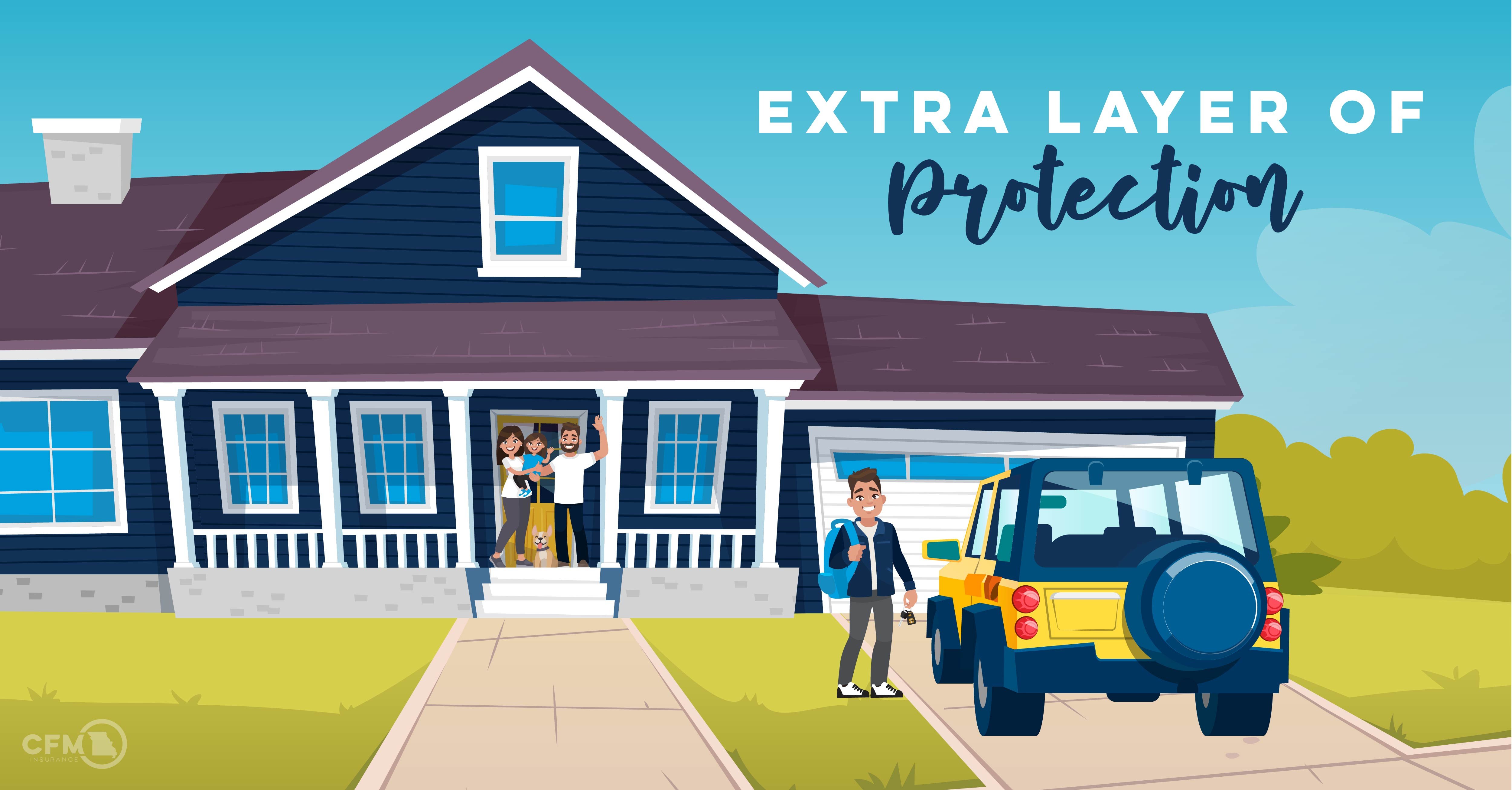 How a Personal Umbrella Policy works: When you've exhausted the coverage provided by your homeowners or auto policy, your personal umbrella policy - which is a stand-alone policy separate from your home and auto policies - kicks in. This beneficial - and extremely affordable - coverage helps you avoid paying high out-of-pocket costs if you're found liable on a large claim.
How a Personal Umbrella Policy works: When you've exhausted the coverage provided by your homeowners or auto policy, your personal umbrella policy - which is a stand-alone policy separate from your home and auto policies - kicks in. This beneficial - and extremely affordable - coverage helps you avoid paying high out-of-pocket costs if you're found liable on a large claim.
Umbrella insurance coverage also extends to other members of your household, such as your spouse and children. That means if you face a claim scenario where your child or spouse is at fault, your umbrella insurance policy can protect them. As you could imagine, this coverage is especially valuable if you have a teen driver in your household.
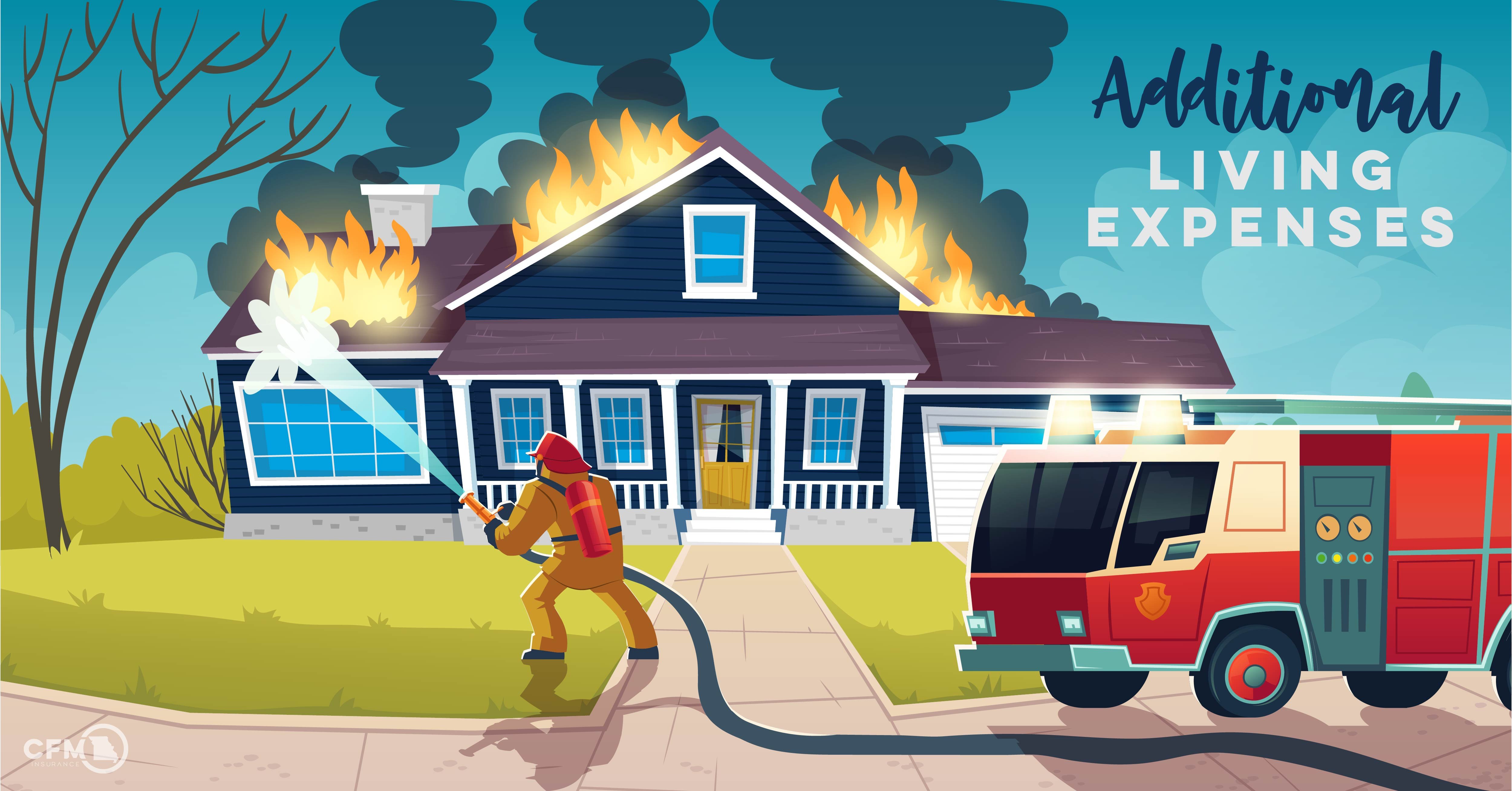 Additional Living Expenses (ALE) - This beneficial coverage saves the day when you're unexpectedly displaced from your home due to a loss by a covered peril on your homeowners policy. For example, if your home gets damaged or destroyed by a fire and is deemed uninhabitable, your Additional Living Expense coverage will reimburse you for reasonable expenses incurred during the time period that you are away from your destroyed home (hotel stay, food, and other personal items), up to a certain amount and with certain restrictions.
Additional Living Expenses (ALE) - This beneficial coverage saves the day when you're unexpectedly displaced from your home due to a loss by a covered peril on your homeowners policy. For example, if your home gets damaged or destroyed by a fire and is deemed uninhabitable, your Additional Living Expense coverage will reimburse you for reasonable expenses incurred during the time period that you are away from your destroyed home (hotel stay, food, and other personal items), up to a certain amount and with certain restrictions.
Standard Homeowners Insurance Policies Don't Cover
Intentional Harm/Injury - Because it is illegal to intentionally harm someone else or their property, it would therefore be illegal for an insurance company to pay for those crimes. As mentioned above, your personal liability coverage on your homeowners policy will pay for unintentional accidents or injuries, up to a certain amount.
Business Pursuits - Because they pose a greater liability risk, home-operated businesses with multiple employees or frequent visitors typically aren't covered under a standard homeowners policy. This includes common home business ventures like petting zoos or u-pick gardens. The home-based business would need to be insured under a commercial insurance policy for there to be adequate coverage.
Earthquakes/Floods - In most states, including Missouri, earthquakes, sinkholes, and other earth movements are not covered by a standard homeowners insurance policy. However, earthquake coverage can be added to your policy as an endorsement for an additional cost. Flood insurance must be purchased as a separate policy and is available only through the government-run National Flood Insurance Program.
Service Lines/Equipment Breakdown - Unfortunate circumstances like a sewer backup or a furnace unexpectedly breaking down in the dead of winter are not covered by a standard homeowners policy. But those pricey (and aggravating) problems can be covered under your CFM homeowners insurance when you add Service Line Coverage or Equipment Breakdown Coverage to your policy. For low annual premiums, you can save yourself thousands in potential repairs down the road.
Vermin - Any damage to your home caused by those nasty little creatures we all love to hate - mice, bats, insects, raccoons - won't be covered by your homeowners insurance.
Homeowners Insurance Terms You Should Know
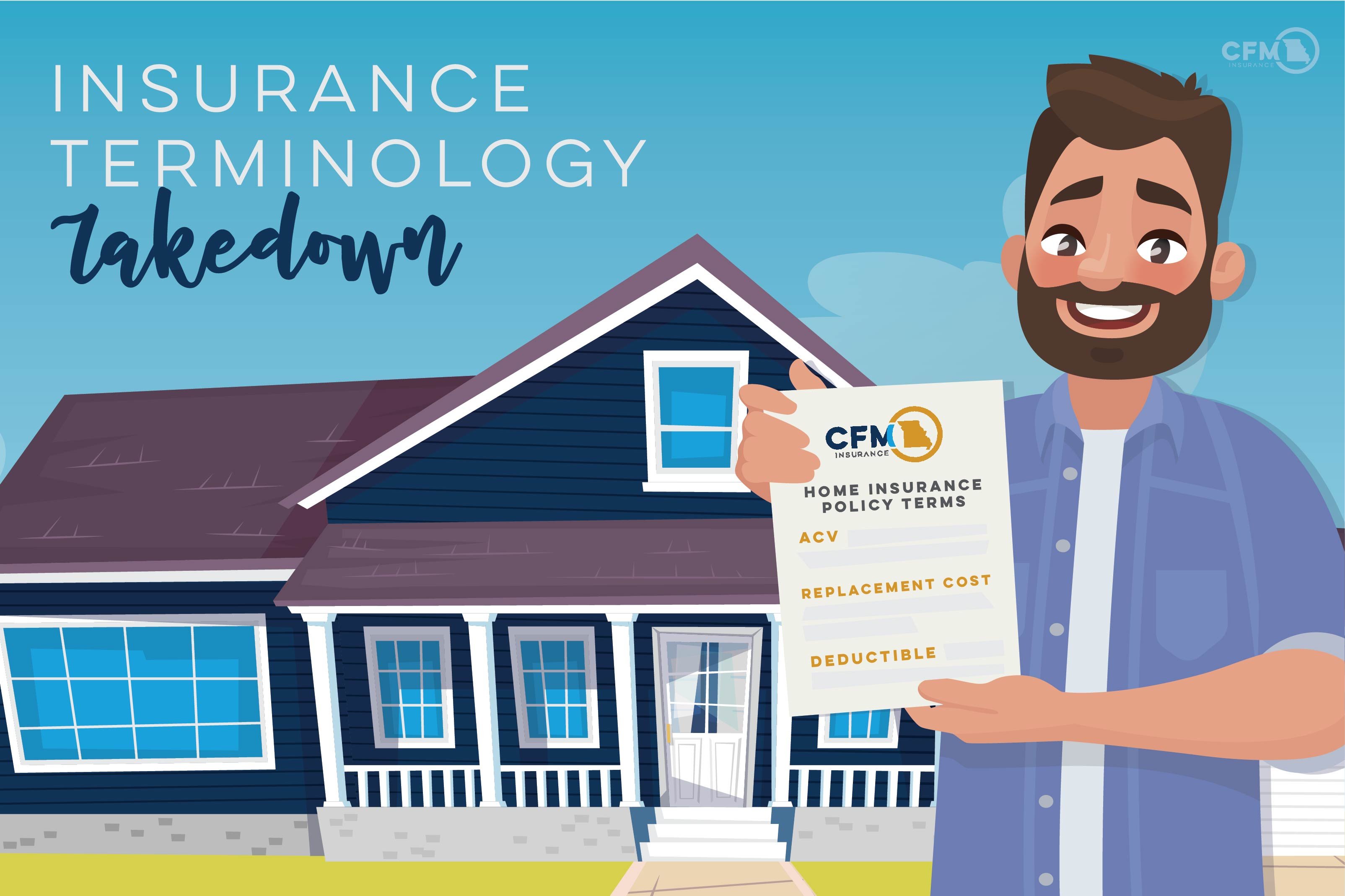
Now that you've got a better picture of the ins and outs of homeowners insurance, it's time to get familiar with some of those confusing (but highly important) insurance terms you'll find in the fine print of your policy.
Actual Cash Value (ACV) - The initial payment reimbursed to a policyholder after they file a claim. That payment covers the value of the damage the day of the loss, after depreciation is withheld. With ACV policies, you must only expect to get paid for what your items or property are worth today, not what it cost when you originally bought it or what it will cost to replace it now.
Replacement Cost - The amount of money it takes to replace what's been damaged in a claim, less the deductible. Insurance companies calculate replacement cost as the initial amount you paid for the item. If the item you bought is no longer available, your insurance company will replace it with a comparable item. For example, if your Dell computer gets destroyed in a fire and Dell no longer makes computers at the time of your loss, you would be given a comparable brand that has the same features and price as your destroyed Dell.
Depreciation - Over time, your home and most of its contents lose value due to a variety of factors like age and natural wear and tear. This devaluation is referred to in the insurance world as depreciation. When you file a claim on a replacement cost policy, depreciation is the amount that is withheld from the claim payment and can be recovered once the work is completed. If you have an Actual Cash Value (ACV) policy, the depreciation that is withheld is non-recoverable.
Deductible - The portion of an insurance loss (in dollars) paid by you, the policyholder. Deductibles can range anywhere from $500 to $10,000. Some homeowners policy types require a base deductible, but in many cases, it can be raised or lowered by the policyholder. Choosing a higher deductible results in lower premiums.
Endorsement - Extra coverage that can be purchased to provide protection above and beyond what's provided in the homeowners policy. For example, if you wish to have higher coverage on those important, valuable items like jewelry, fine art, or coin collections, you can have those things protected by an endorsement in addition to the base amount included with your homeowners policy.
Exclusion - Specific situations, conditions or circumstances that are listed in your homeowners insurance policy as not being covered. For example, if a routine inspection of your property finds certain things have been neglected, they may be excluded from a portion of your policy's coverage.
Inflation Guard - Over time the value of your property will change due to inflation, which could leave a gap between your coverage and the cost to rebuild your home today. That’s where inflation guard coverage comes in, protecting the costs associated with the rebuild of your home. It automatically increases the amount of insurance on your home a certain percentage each year to account for the cost gap caused by inflation.
Premium - The amount of money an insurance company charges, based on a given rate and policy type, to provide protection for your home and its contents for a specified period of time. Typical homeowners insurance premiums are charged annually, falling on the renewal date of the policy, but different payment plans can be arranged (monthly, quarterly, and/or semi-annually).
Types Of CFM Homeowners Policies
Standard homeowners coverage explained - Check! Insurance terminology takedown - Check!
Now, take a look at this easy-to-understand breakdown of the different CFM homeowners policy lines, designed with every home in mind, so you can get a better idea of where yours may fit. Keep in mind, your home's CFM Insurance policy is totally customizable and meant to be built around its unique coverage needs.
Did you know? You can now package your auto policy with your home policy. That's right - CFM now offers auto coverage to Missouri drivers who have their home insured with us. The more CFM policies in your insurance family, the merrier (and more affordable). For more information on our new Package Program and the Multi-Policy Discount that comes with it, contact your trusted local CFM agent.
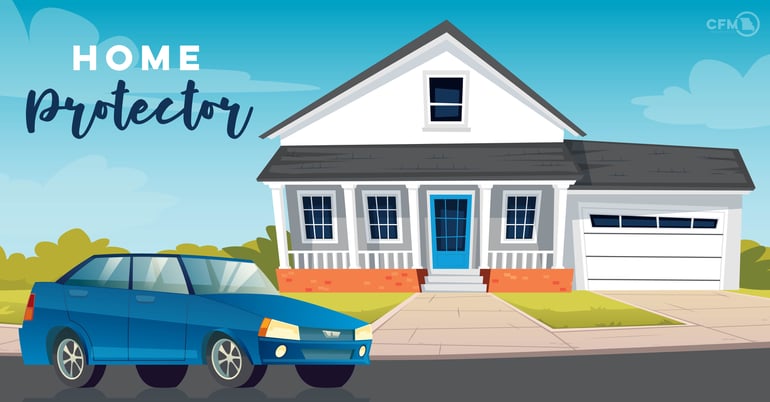
The CFM Home Protector offers excellent coverage for older homes that are well maintained. Some of the general qualifying factors for this program includes a minimum replacement value of $60,000, as well as the home having current wiring, heating/cooling, and plumbing. For more information about this policy type, and to see if your home qualifies, you'll need to contact a CFM agent.
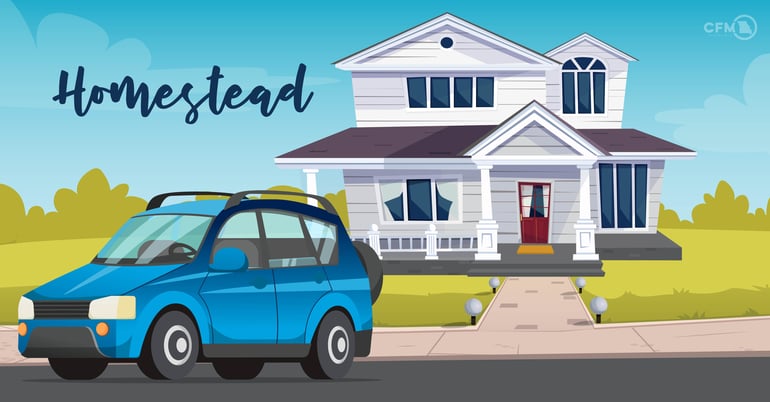
The CFM Homestead policy is ideal for well-kept, newer homes. A couple of key qualifying factors for this program includes a minimum replacement value of $100,000 and the home having been built in the last 40 years or recently updated. For more information about this policy type, and to see if your home qualifies, reach out to a CFM agent.
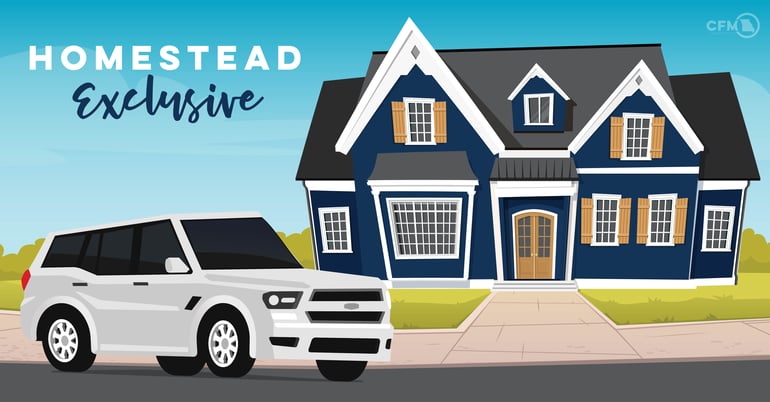 The CFM Homestead Exclusive is our top-shelf product for newer homes. A couple of key qualifying factors for this program includes a minimum replacement value of $150,000 and the home having been built in the last 25 years. Again, if you think your home may qualify for this program, make sure and give a CFM agent a call.
The CFM Homestead Exclusive is our top-shelf product for newer homes. A couple of key qualifying factors for this program includes a minimum replacement value of $150,000 and the home having been built in the last 25 years. Again, if you think your home may qualify for this program, make sure and give a CFM agent a call.
Now that you're basically a homeowners insurance expert, are you ready to build a tailored-to-you home insurance policy and discover what awesome discounts you may qualify for? Trust one of our local, independent agents who are dedicated to finding you the best protection at a great price. And don't forget to package your auto policy with yours truly, too. Click the image below to get started.
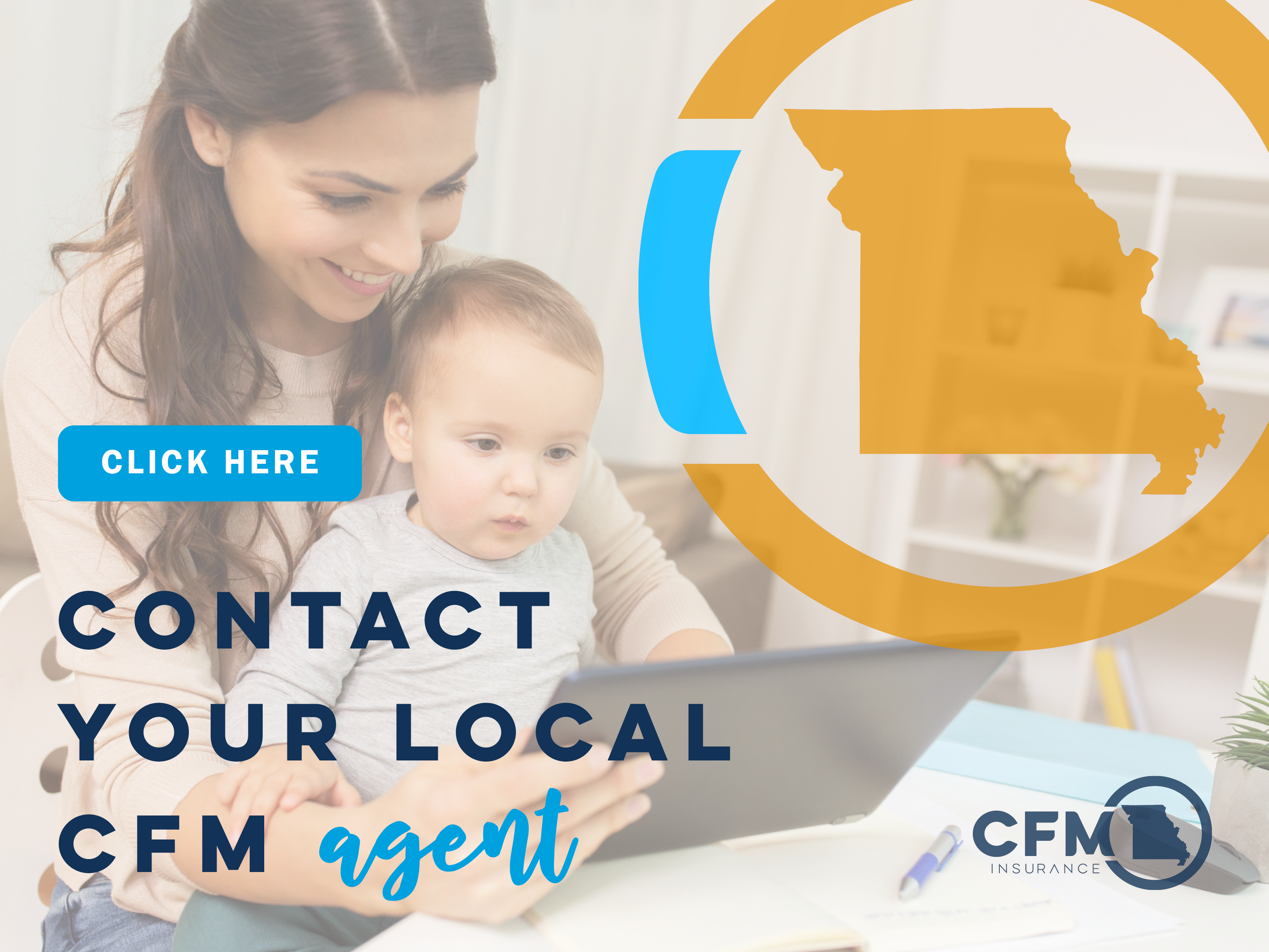 *The above statements are meant to be general in nature, and may or may not apply to any or all insurance companies.
*The above statements are meant to be general in nature, and may or may not apply to any or all insurance companies.
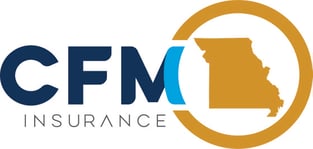

Your Comments :